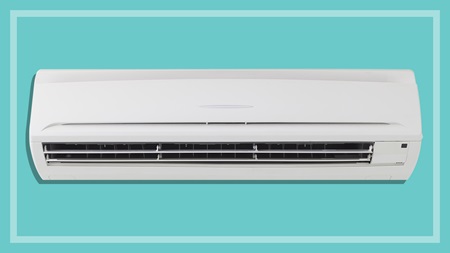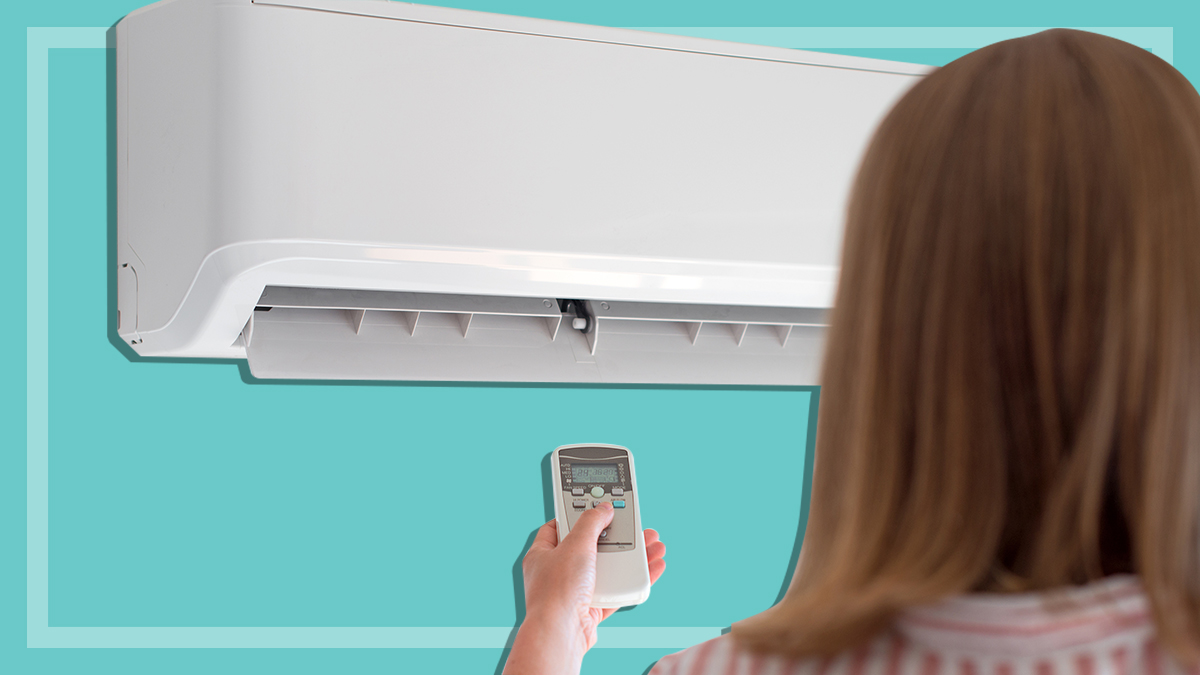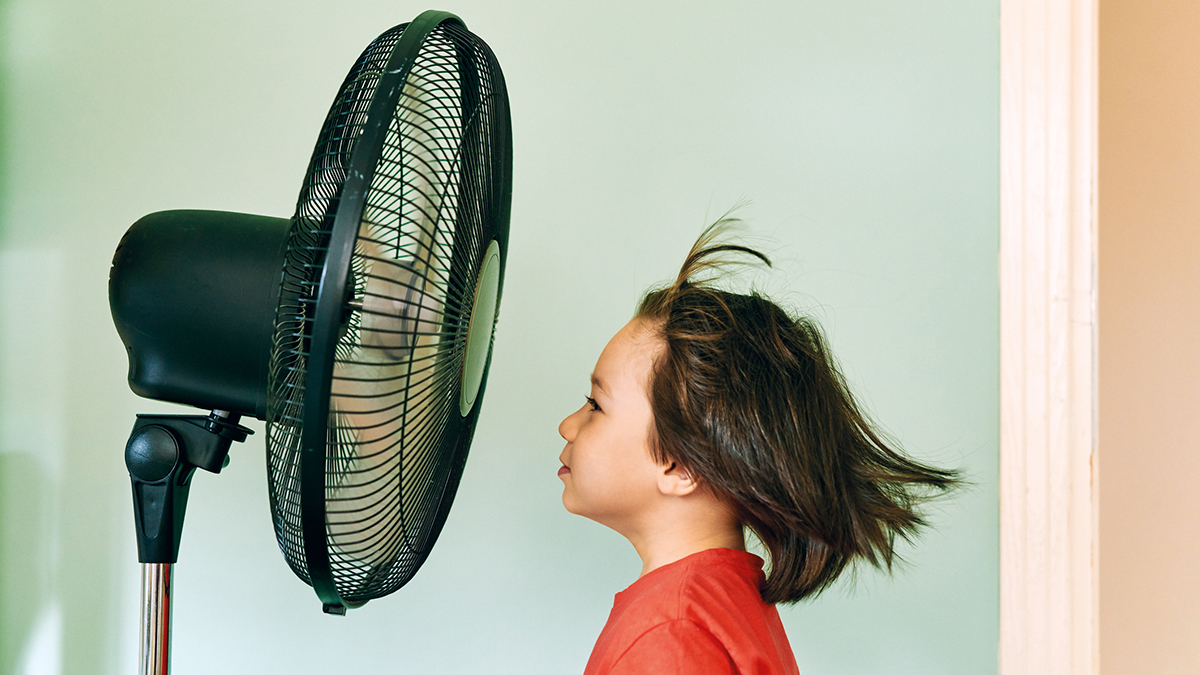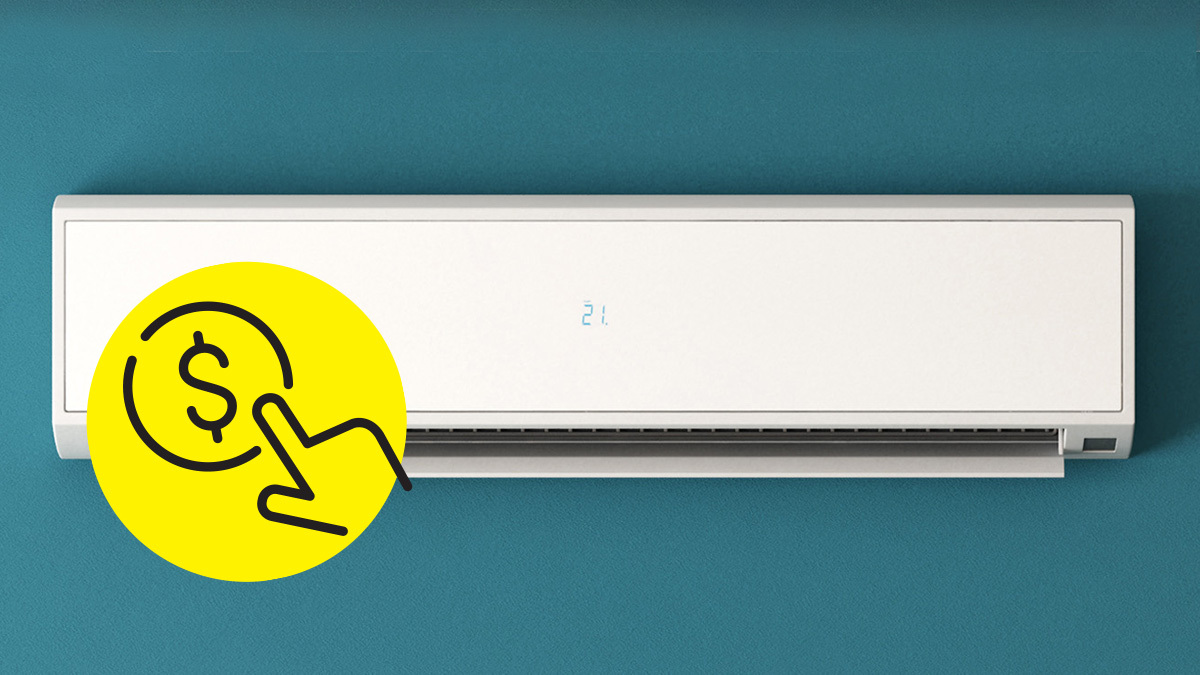Get our independent lab tests, expert reviews and honest advice.
How much does an air conditioner cost to install or replace?
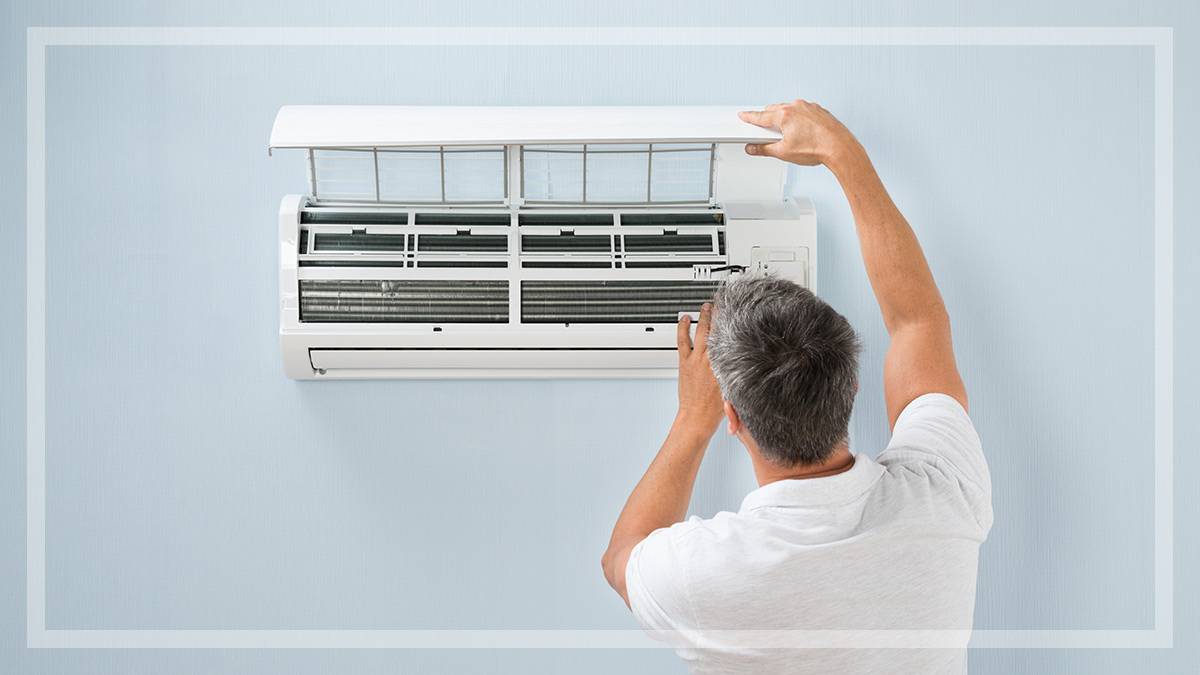
If you’re sick of sweltering in summer and freezing in winter, or looking at more efficient ways to cool or heat your home, you may be considering installing an air conditioning system.
On this page:
- Air conditioner system costs
- Installation costs and what's involved
- How long does it take to install split-system air conditioning?
- Choosing the best place for your split-system air conditioner
- Air conditioner replacement costs
- Options for installing air con
- Questions to ask an air conditioner installer
While installing air conditioning can involve expensive upfront costs, a reverse-cycle split system can also be one of the most energy-efficient ways to cool and heat your home, saving you money in the long run.
But just how much cash are you going to have to shell out to chill out?
We look at the costs to install or replace a unit, what’s involved, and share our expert tips to help you get the best price, service and performance.
Air conditioner system costs
The most common type of air con installed in Australian homes is a split-system air conditioner, which comes with an indoor unit and an outdoor unit connected by pipes.
Although the upfront installation costs are more significant than buying a portable air conditioning unit, these systems are very efficient and relatively cheap to install (as compared to a ducted system, for example) so they’re usually one of the most cost-effective options in the long run.
The total cost will depend on the price of the units you select, and the tradesperson’s fees to install them. Split air con units can vary dramatically in price from $600 to $5500, depending on:
- brand and model
- size and capacity (measured in kilowatts – see what size you need)
- smart features such as sensors, eco modes, Wi-Fi and app compatibility
- time of year (you may get a better price in off-seasons).
Installation costs and what’s involved
An installer’s fees can range from $600 to $800 or more and depend on a number of factors. As always, it’s a good idea to get a few quotes before committing.
You need a licensed air conditioner technician to ensure your system is installed legally and safely, and to ensure your product warranty isn’t voided. They’ll usually also need electrical qualifications to wire the unit into your home. Plumbing accreditation may be needed if the air con drain has to be connected to your home’s waste water system.
You need a licensed air conditioner technician to ensure your system is installed legally and safely
CHOICE air conditioning expert Chris Barnes says: “While an installer doesn’t necessarily need to see your home before quoting, they should be asking lots of questions beyond simply how big your space is, or what rooms you are looking to install air con in.
“As well as asking about where you live and things such as whether your walls and ceilings are insulated, they may also ask for photos of your indoor and outdoor spaces so they can see what they’re dealing with and can quote accordingly. This prevents getting hit with unforeseen costs or complications down the track.”
CHOICE tip: Don’t wait until it’s sweltering! Installers often book out in peak season and waiting periods can be long. Plan ahead to beat the heat.
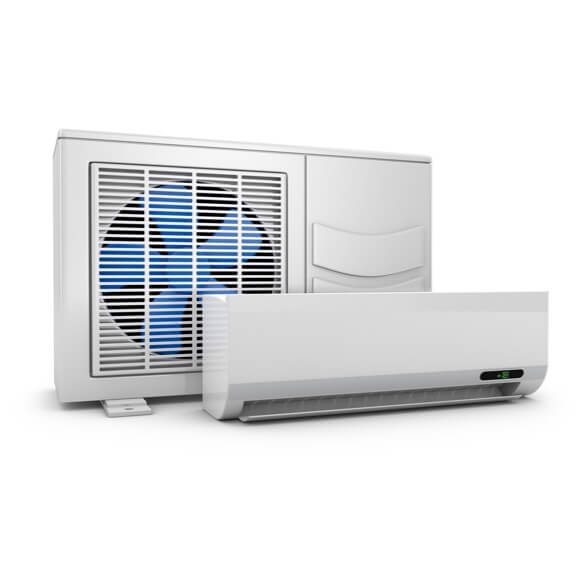
Factors affecting installation costs
Each quote will differ depending on the home. Here’s what a technician will consider when quoting:
- Number of units being installed, as well as the type, size and brand.
- Complexity of the installation – i.e. how much piping or cabling is needed, and where the units are located in your home.
- Upgrades to your electrical system, if needed.
Chris says: “If you’re installing a new split-system air conditioner, it should be on its own dedicated circuit and that means some electrical work will be needed to install that new circuit. That will add a bit to the installation cost.”
A ducted air conditioning system can be a very effective solution to cooling or heating your whole house but it’s also much more expensive to install than split-system air conditioning. For this reason, you should consider first whether multiple split-system air conditioner units across key rooms may better suit your needs.
You’ll be hard-pressed to purchase a ducted reverse-cycle air conditioning system for less than $5000 (including installation). That’s the entry-level cost for a small home such as an apartment. For a typical freestanding house, the cost can easily reach $10,000 or more, depending on the size and type of system you choose. For a large or multi-floor home you’re probably looking at $15,000 or more. In any case, the installer should inspect your property thoroughly before giving you a quote. Find out more about ducted air conditioning.
A portable air conditioning unit can cost you anywhere from around $300 for a unit for a smaller room up to $1500 for a larger unit (3.5–5.0kW) that will suit a larger bedroom or living area. They’re easy to install yourself, so there’s no extra tradie costs to factor in.
You need a window kit (most portable air conditioning units will come with this, but not all, so check our reviews before you buy) and an open window that you are able to install the exhaust vent in. Find out more about installing a portable air conditioner.
Keep in mind that portable air conditioners may be easy and relatively cheap to buy and install, but they can be expensive to run, so take this into account when you’re working out which option will suit your ongoing needs.
How long does it take to install split-system air conditioning?
The time it takes to install your air conditioning system depends on factors such as how many units you’re installing, where they’re being installed, and how accessible your indoor and outdoor areas are. If it’s relatively easy for the tradesperson to access the outdoor area where the unit should be installed, it should take only a few hours.
If you’re getting multiple split systems installed (or a multi-split system, with a single outdoor unit connected to multiple indoor units), this is obviously a more complicated process which can add more hours to the install. These installations may need to be done over a few days.
Choosing the best place for your split-system air conditioner
Installers will be able to advise on the best position possible for your split-system air conditioning units, both within your rooms and outdoors, to maximise efficiency and keep costs as low as possible.
“There’s not always a lot of flexibility as to where your air-conditioning units can go,” says Chris. “You’ll want them high up on a wall and in a position that enables them to blow air clearly across the width or length of a room.

“Particularly with split systems, the best position is very much dictated by where the outdoor unit is positioned, as you usually want to avoid a long run of piping between the indoor and outdoor unit.”
Your outdoor unit should ideally be in a sheltered position, and attached to a wall with brackets or on a concrete base. Keep in mind that wall-mounting brackets or poly/concrete bases for your unit may add to your installation costs. If you have limited outdoor space for units, you may consider a multi-split air conditioning system that can connect several different indoor units to a single outdoor unit.
CHOICE tip: If you live in a strata-managed apartment, you’ll probably need approval from your body corporate to install air conditioning.
Air conditioner replacement costs
If you have an old system, or a broken one, it may be time to upgrade or replace it. The average lifespan of an air conditioning unit is 15 to 20 years. New models are much more energy efficient than older units, so by installing one you should be able to save money on your energy bills in the future.
It’s usually cheaper to replace an old air-conditioning unit than to install one for the first time, as long as the replacement system is going into exactly the same indoor and outdoor positions. This is because the installer can usually use the same pathway for the piping, so there’s less need to drill holes through walls or pour a concrete base.
New models are much more energy efficient than older units, so you should save money on your energy bills
“Replacing an old split system with a new one shouldn’t require any new electrical work in most cases, so that would also help keep your costs down,” Chris explains.
However, the old piping will usually need to be replaced to suit the requirements of the new system, or the old piping may be contaminated or damaged. Also, the new air conditioner’s warranty will usually require new piping to be used.
In some cases, it may be possible to clean and reuse the existing piping. Your installer can advise if this is the case, but make sure to check that this won’t void the warranty on your new unit and consider that it may not cost much extra to simply install new piping.
Options for installing air con
There are three common options for getting a unit installed:
1. Choose an installer who offers supply and installation
Pros: The popular option, it offers a ‘one-stop shop’ where everything is handled for you.
Cons: You could be restricted to using a certain brand or type of air conditioner, so look for an installer who offers the brand or model you prefer.
2. Buy the unit from a retailer who offers installation by a preferred provider
Pros: Much of the process is still managed for you, but you have a bit more flexibility to shop around for a better price on your unit.
Cons: You still have to manage the logistics of buying the unit yourself, having it delivered and storing it until installation. You’ll also be tied into using the retailer’s preferred installer.
3. Buy the unit yourself and arrange your own installer
Pros: Offers the greatest flexibility in shopping around for a good deal on your unit and working with an installer of your choice.
Cons: Requires more research to find the best unit and right tradesperson. We recommend finding an installer before buying a unit.
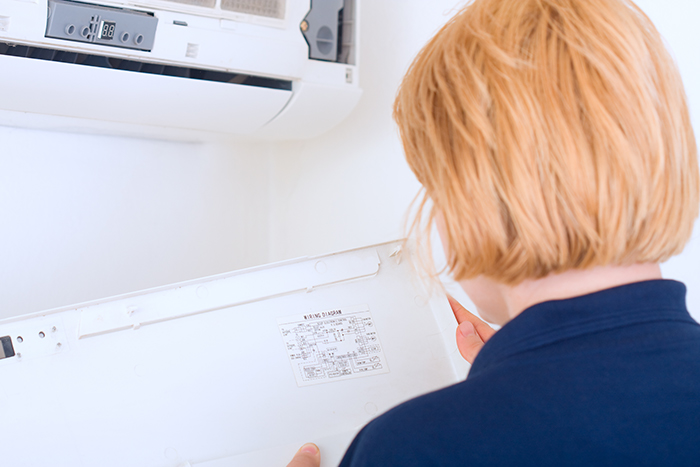
Our expert advice on installation options
Chris’s first bit of advice is to do your research and plan ahead before the heat or cold kicks in.
“Installers are usually very busy during the main seasons,” he says. “Don’t presume you’re going to be able to call someone and get them to come quickly to your house and do it all for you – there could be a significant waiting period, particularly if there’s a lot of hot weather. It’s also a good idea to get at least two quotes if you can.”
He also advises weighing up the pros and cons of the different options outlined above.
Some tradespeople won’t want to do the install of a product they haven’t supplied, or a brand they don’t usually work with
CHOICE air conditioning expert, Chris Barnes
“The advantage of buying the air conditioning unit yourself is that you can shop around for the cheapest deal to save yourself some cash – there are often some bargains to be found online,” says Chris.
“But then you need to find your own licensed tradesperson. Availability can be an issue, especially in peak seasons, and some tradespeople won’t want to do the install of a product they haven’t supplied, or a brand they don’t usually work with.
“While some ‘all-in-one’ air-conditioning suppliers and installers will only work with certain brands, you still may be able to be specific about which brand or model you want – just ask.”
Always do your research
No matter which installation route you go down, it’s vital to do your research to make a well-informed choice. Chris recommends looking at how different brands perform in our reviews and urges caution of suspiciously cheap models.
“Cheaper upfront costs on air conditioning units usually mean the model is less energy-efficient, so you could end up paying more in electricity bills in the long run,” he says. “It’s often worth it to invest a bit more in a reliable, quality brand.”
Questions to ask an air conditioner installer
Before engaging a tradie to install your air conditioner, ensure you confirm not only their hourly rate but also how many people will be present at your property during the installation and how long they estimate the job will take.
You should also check that anyone doing the work is fully licenced to install air conditioning. Ask them:
- Do you have a full Refrigeration and Air Conditioning licence, and an electrical licence if needed?
- Do you have insurance? Is the work covered by insurance?
- What is included in your service fees?

